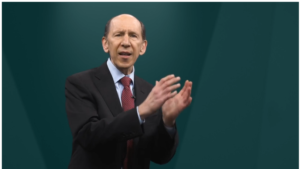
By Steve Lowrie, CFA
Special to the Financial Independence Hub
Lately, the wisdom of having adequate cash reserves has been painfully hitting home for many investors. Sometimes, it has spurred attempts to fix the issue as soon as possible by “going defensive.” During this year’s booms and busts, investors have been asking me:
“With all the bad news, stock markets seem overpriced.
Should I sell some of my stocks and use the proceeds to become more defensive?”
Market-timing by any other name
You probably don’t remember, but back in 2018, we used a modest market downturn to remind everyone how important it is to have enough liquid cash to ride out market storms. Today, let’s tackle how to create those comforting reserves to begin with.
There’s never a bad time to build more cash reserves or similar safe harbour holdings if your investment plan calls for it. However, I would not advise reducing your position in stocks and going to cash simply because markets seem too hot to handle. This is just another form of market-timing.
Whether the strategy is successful depends more on random luck than evidence-based reason.
 Here’s a powerful new video from Dartmouth Professor Ken French (the “French” in the Fama/French 5-Factor Model) with several reasons why this sort of market-timing is so difficult. He concludes, “Most investors shouldn’t try to time the market. When they do, they’re simply spending resources to move away from a better portfolio.”
Here’s a powerful new video from Dartmouth Professor Ken French (the “French” in the Fama/French 5-Factor Model) with several reasons why this sort of market-timing is so difficult. He concludes, “Most investors shouldn’t try to time the market. When they do, they’re simply spending resources to move away from a better portfolio.”
Deliberately defensive investing
So, how can you shore up your cash reserves? If you happen to receive a windfall of cash next week, congratulations! Problem solved. More realistically, you’ll need to extract the reserves out of your carefully structured portfolio, while keeping its overall asset allocation intact.
For example, say you’ve built your portfolio “pie” out of 60% stocks and 40% bonds. You’ve also assigned percentages for different kinds of equities within your stock slice: so much in Canadian stocks, US stocks and perhaps in factors such as value stocks etc. Rather than remove an entire slice because it happens to seem overpriced, the goal is to remove bites here and there. Your overall pie becomes smaller, but the relative size of each slice should remain about the same.
Employing dollar-cost averaging
As you might imagine, it can be tricky to extract significant cash as described with one big bite. And that’s before we even consider the tax implications. To make the move more palatable, you could execute the extraction with a reverse form of dollar-cost averaging.
More often, you read about dollar-cost averaging as a way to add investments into the market. Say, for example, you actually do inherit $300,000 next week, and you decide to invest it. You could go ahead and invest it all right away. Or you could use dollar-cost averaging to invest $25,000/month over the coming year.
Reverse that concept for creating a cash reserve. To build an extra $120,000 in liquid reserves, you could remove the entire amount at once, as described above. Or, you could establish a disciplined, year-long schedule for shifting $10,000 monthly out of your portfolio into your reserves. This approach can give you more wiggle room to identify which assets to cull over a year’s time for optimal portfolio management.
All else being equal, which is the better approach: shifting your holdings all at once, or spreading out the trades over time? That seems like a great subject for a future post.
 Steve Lowrie holds the CFA designation and has 25 years of experience dealing with individual investors. Before creating Lowrie Financial in 2009, he worked at various Bay Street brokerage firms both as an advisor and in management. “I help investors ignore the Wall and Bay Street hype and hysteria, and focus on what’s best for themselves.” This blog originally appeared on his site on August 6, 2020 and is republished here with permission.
Steve Lowrie holds the CFA designation and has 25 years of experience dealing with individual investors. Before creating Lowrie Financial in 2009, he worked at various Bay Street brokerage firms both as an advisor and in management. “I help investors ignore the Wall and Bay Street hype and hysteria, and focus on what’s best for themselves.” This blog originally appeared on his site on August 6, 2020 and is republished here with permission.

